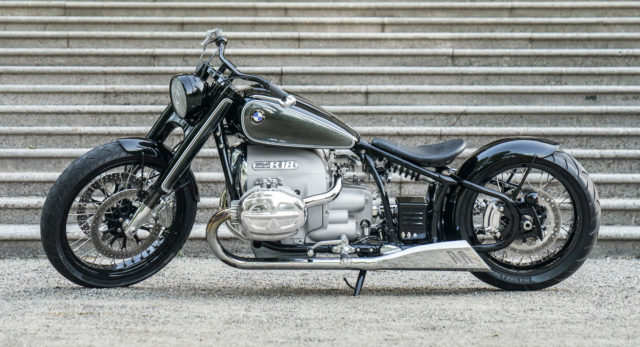An utter disaster.

It used to be the case that if you had awful taste, cared not one whit for good engineering and valued form over substance, that there was only one motorcycle which fit the bill.
That was Harley-Davidson, which continues to make some of the worst two wheeled powered machines on the planet. Massively overweight like its owner, poor reliability, loud and crass, made by proud American workers with their lank, greasy hair, AC-DC T shirts and beer bellies, the workers were much like the riders.
For the class end of the spectrum there were several choices. BMW, of course, but also Ducati and Moto Guzzi, the last two hailing from Italy. Maybe not as reliable as the many fine machines from the Big Four in Japan, and certainly costlier to acquire and maintain, they were beautifully engineered, did not leak or break down that often, and you would get to enjoy the company of like minded fellow riders without the need for broken beer bottles and bar fights.
Then around the turn of the century BMW decided they would target the cruiser crowd and came out with a porker named the R1200C. They even had Pierce Brosnan ‘ride’ one in a Bond 007 movie, manacled to a beautiful accomplice, no less. Must have made for tough clutch operation, what with his left hand tied up like that, but at least she knew her place, which was (mostly) on the back of the bike. Sporting a detuned 1200cc version of the air and oil cooled boxer motor, they sold about ten of these in the US and the bike was quickly – and rightly – forgotten. Overweight, underpowered and with enough chrome to make an H-D owner take notice, the bike was an utter disaster.

R1200C + Brosnan in riding gear.
But BMW was determined not to learn from its folly and is now releasing an even worse example, if that is at all possible, of the R1200, the R18. Think of it as an R1200C with ccs and avoirdupois added.
A brief table of data, comparing the r18 with my air cooled 1975 R90/6 tells all you need to know:

45 years of progress. A not so pretty comparison.
It’s the red statistics which jump out at you. Weighing almost twice as much the engine, also twice the size in the new machine, produces 25% less horsepower per liter – and this with every electronic gizmo known to man with fuel injection thrown in, while the chassis sports an unmanoeuverable wheel base some 10″ longer. And they want $20,000 in bare form for this monstrosity, which means $25,000 out the door.
As for fit and finish, any H-D owner would be proud. Just look at the atrocious onion peel paint finish on the tank:

American quality paint finish.
They did it just a tad better in 1975:

My 1975 R90/6.
To add insult to injury, the lovely pinstripes emulating the original machine (mine!) will only be available in the 2020 model year. Assuming there is a 2021 model – doubtful – pinstripes will likely add $2,000 to the price.
Anyway, for poseurs who cannot ride and have to stop for both filling and new fillings after the 100 mile tank is on reserve, this could be just the bike for you. You see, the 4,000 rpm sweet spot coincides with the worst vibes. By design. But frankly, at that price I would prefer a Harley and would likely have enough left over for a tattoo or two. $2k less, same vibration and a heart with an arrow through it on my bicep. Just the thing.
Cycle World does its level best to find something good to say about this abomination here. Read. Weep.





